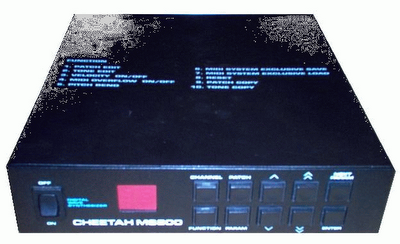
flickr by judsonian.
Moog is the title of the shot.
The synth is obviously a Korg MicroKorg.
EVERYTHING SYNTH



 From the makers of the Haken Continuum Fingerboard.
From the makers of the Haken Continuum Fingerboard.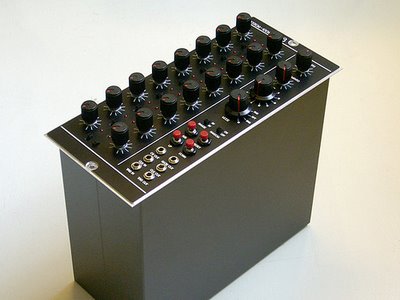 Via ryktnk:
Via ryktnk: "This is a software program that intends to act as a MIDI controller by using various peripheral devices. The initial release(s) will be focused on using a webcam as a MIDI controller with 3 dimensions (XYZ)."
"This is a software program that intends to act as a MIDI controller by using various peripheral devices. The initial release(s) will be focused on using a webcam as a MIDI controller with 3 dimensions (XYZ)." "Welcome to Splice. We would say welcome to the future of music, but modesty and serious self-restraint prevent us from it... either way it's nice you showed up. So what's the big deal? Splice gives anyone, anywhere the ability to collaborate on music right through a web browser. Users can upload or record sounds, make songs, listen to other user's songs, make remixes, make friends and a whole lot more."
"Welcome to Splice. We would say welcome to the future of music, but modesty and serious self-restraint prevent us from it... either way it's nice you showed up. So what's the big deal? Splice gives anyone, anywhere the ability to collaborate on music right through a web browser. Users can upload or record sounds, make songs, listen to other user's songs, make remixes, make friends and a whole lot more." Update: Please read the comments of this post if you are considering purchasing this Wiard. As always be careful on the 'bay. I'm just grabbing the shots and info for the interesting listings.
Update: Please read the comments of this post if you are considering purchasing this Wiard. As always be careful on the 'bay. I'm just grabbing the shots and info for the interesting listings. 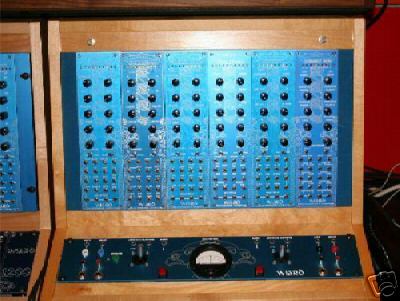
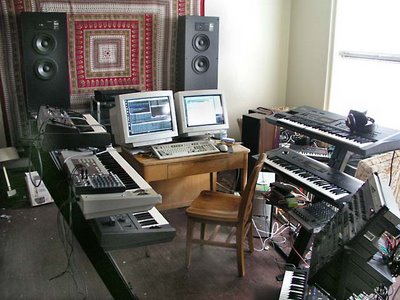 Title link takes you to chromals Gear a synth site info and samples on a number of synths.
Title link takes you to chromals Gear a synth site info and samples on a number of synths. Title link takes you to shots pulled via this auction.
Title link takes you to shots pulled via this auction. Title link takes you to shots pulled from this auction.
Title link takes you to shots pulled from this auction.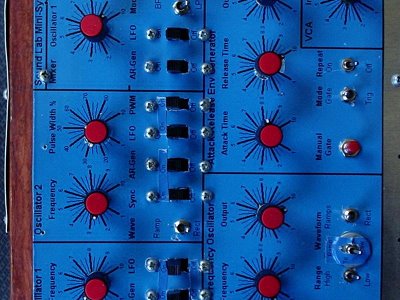

 Title link takes you to the set with supersized shots.
Title link takes you to the set with supersized shots.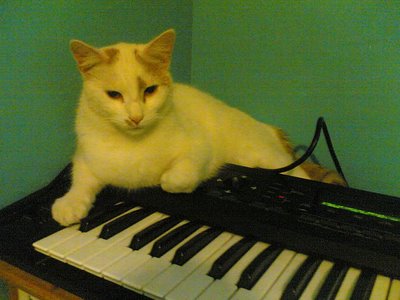 Title link takes you to a new digital synthesizer resource site. This is a hobby site by OriginalJambo, so don't expect too much. Currently there are some ESQ-1 samples and info up. The following appear to be coming next: Alesis Ion, Ensoniq ESQ-1, Kawai K1, Roland D50, Roland Juno6, and Yamaha DX7. Nice cat.
Title link takes you to a new digital synthesizer resource site. This is a hobby site by OriginalJambo, so don't expect too much. Currently there are some ESQ-1 samples and info up. The following appear to be coming next: Alesis Ion, Ensoniq ESQ-1, Kawai K1, Roland D50, Roland Juno6, and Yamaha DX7. Nice cat.
 "Bitstream3X, "3X" stands for "3 Axis" because the Bitstream 3X features full control over three different Axis- X, Y and Z. A joystick allows control over two (X and Y), while an ribbon controller is used for the Z axis. With 35 knobs, 8 Sliders and 16 buttons, the Bitstream gives you total hands on control of any DAW software and comes with an astounding 13,000 presets including Reason, Live, Reaktor, Traktor, Absynth, Cakewalk and of course Cubase. Digital DJ’s will love the MIDI Cross fader and the 8 track motion sampler allows automated recording of the movements of the knobs, joystick, crossfader and ribbon controller."
"Bitstream3X, "3X" stands for "3 Axis" because the Bitstream 3X features full control over three different Axis- X, Y and Z. A joystick allows control over two (X and Y), while an ribbon controller is used for the Z axis. With 35 knobs, 8 Sliders and 16 buttons, the Bitstream gives you total hands on control of any DAW software and comes with an astounding 13,000 presets including Reason, Live, Reaktor, Traktor, Absynth, Cakewalk and of course Cubase. Digital DJ’s will love the MIDI Cross fader and the 8 track motion sampler allows automated recording of the movements of the knobs, joystick, crossfader and ribbon controller."
 Just in case you were wondering...
Just in case you were wondering... Via Peter Grenader of Plan B
Via Peter Grenader of Plan B via Loscha:
"Some people who own Tx81z units might not know that many of the ROM sounds are custom designed for Wind/Breath controller use, which is why some of the sounds are rather quiet."
Title link takes you to shots pulled from this auction. Some details also pulled pulled from the auction:
"Lots of fun for the Sax player. The Sax can be used with the battery pack on the waist or with a power lead through the cable.The TX81Z synth is still sought after for the rack for it's ability to blend into a mix, and may be the most generally useful of the two.The Sax can also be used with any midi sound generator that can receive breath control."
"The sax can be set as a Bb,Eb or C instrument.(see close up photo). It is not a toy and has been used by International Artists.Plenty of stuff on the Internet about this instrument.Very similar to the WX11 and preferred by some."
"The following is an edited version of an article by Rex Djere..
In the mid 1970s, Nyle Steiner invented a wind controller based on the trumpet. He called it the Electronic Valve Instrument. All of these events predated Yamaha's entrance into the wind synthesizer market by more than a decade. During this time, Yamaha was focused on its core markets: brass and woodwind instruments; and keyboards, both pianos and synthesizers. In the 1970s and early 1980s, there was not really that great a demand for wind sythesizers. The demand for the electronic wind instruments began to increase in the early 1980s due to the adoption of EWIs by two very famous saxophonists, Michael Brecker and Tom Scott. Tom Scott's performance on his EWI on Saturday Night Live in 1982 caused quite a stir in the saxophone community. Yamaha saw the writing on the wall, and began developing its own wind synthesizer.
When the WX7 was finally released, it was completely revolutionary. The WX7 had adjustable keys, something that had been unheard of in wind synthesizers up until that point. This made it very easy for saxophonists to customize it in exactly the way that they wished. The mouthpiece had a pressure sensor connected to an analog-to-digital converter, but it also contained a metal lever which vibrated and allowed the pitch of the wind controller to be bent much more expressively and radically than other wind controllers on the market. The mouthpiece was fully adjustable. One one the most innovative features of the WX7 was its ability to transmit data on more than one midi channel. This made it possible to play chords and even entire orchestras using the WX7. The WX7 also had a battery pack, making it much more portable than other wind controllers. Sal Gallina became the first WX7 virtuoso. You can here incredible recordings of him playing everything from rock guitar solos to complete orchestral recordings on the WX7 here.
In 1988, Yamaha released the WX11. The WX11's main advancement over the WX7 is that it was somewhat simplified, and therefore easier to use. The WX7 had a very steep learning curve and the WX11 proved to be easier for the beginner to learn. However, the WX11 lost some very powerful features of the WX7 such as a thumb pitch bend wheel. The WX11 was widely believed to be easier to play without glitches than the WX7, but the WX7 was considered by many to be more flexible and more expressive. The WX11 was designed to be coupled with the WT11 wind synthesizer. The WT11 was a digital FM synthesizer that had various effects. It had four FM outputs, eight note polyphony, 10 digital effect (reverb, delay, echo, etc.), and it had internal memory. Both the WX7 and WX11 developed cult followings, with each camp very loyal to its own instrument. These two instruments dominated Yamaha's wind synthesizer landscape for the next decade. Yamaha did release another wind synthesizer called the EW30/Windjammer. This instrument was severely limited. It did not have an advanced pitch bend system as did the WX7 and WX11, and was not taken very seriously. The next major evolution in Yamaha wind synthesis was the arrival of the Yamaha WX5 in 1998, which is still in production and is listed by Yamaha for $1400.THe total package would be over $2000."
via Loscha:
"Some people who own Tx81z units might not know that many of the ROM sounds are custom designed for Wind/Breath controller use, which is why some of the sounds are rather quiet."
Title link takes you to shots pulled from this auction. Some details also pulled pulled from the auction:
"Lots of fun for the Sax player. The Sax can be used with the battery pack on the waist or with a power lead through the cable.The TX81Z synth is still sought after for the rack for it's ability to blend into a mix, and may be the most generally useful of the two.The Sax can also be used with any midi sound generator that can receive breath control."
"The sax can be set as a Bb,Eb or C instrument.(see close up photo). It is not a toy and has been used by International Artists.Plenty of stuff on the Internet about this instrument.Very similar to the WX11 and preferred by some."
"The following is an edited version of an article by Rex Djere..
In the mid 1970s, Nyle Steiner invented a wind controller based on the trumpet. He called it the Electronic Valve Instrument. All of these events predated Yamaha's entrance into the wind synthesizer market by more than a decade. During this time, Yamaha was focused on its core markets: brass and woodwind instruments; and keyboards, both pianos and synthesizers. In the 1970s and early 1980s, there was not really that great a demand for wind sythesizers. The demand for the electronic wind instruments began to increase in the early 1980s due to the adoption of EWIs by two very famous saxophonists, Michael Brecker and Tom Scott. Tom Scott's performance on his EWI on Saturday Night Live in 1982 caused quite a stir in the saxophone community. Yamaha saw the writing on the wall, and began developing its own wind synthesizer.
When the WX7 was finally released, it was completely revolutionary. The WX7 had adjustable keys, something that had been unheard of in wind synthesizers up until that point. This made it very easy for saxophonists to customize it in exactly the way that they wished. The mouthpiece had a pressure sensor connected to an analog-to-digital converter, but it also contained a metal lever which vibrated and allowed the pitch of the wind controller to be bent much more expressively and radically than other wind controllers on the market. The mouthpiece was fully adjustable. One one the most innovative features of the WX7 was its ability to transmit data on more than one midi channel. This made it possible to play chords and even entire orchestras using the WX7. The WX7 also had a battery pack, making it much more portable than other wind controllers. Sal Gallina became the first WX7 virtuoso. You can here incredible recordings of him playing everything from rock guitar solos to complete orchestral recordings on the WX7 here.
In 1988, Yamaha released the WX11. The WX11's main advancement over the WX7 is that it was somewhat simplified, and therefore easier to use. The WX7 had a very steep learning curve and the WX11 proved to be easier for the beginner to learn. However, the WX11 lost some very powerful features of the WX7 such as a thumb pitch bend wheel. The WX11 was widely believed to be easier to play without glitches than the WX7, but the WX7 was considered by many to be more flexible and more expressive. The WX11 was designed to be coupled with the WT11 wind synthesizer. The WT11 was a digital FM synthesizer that had various effects. It had four FM outputs, eight note polyphony, 10 digital effect (reverb, delay, echo, etc.), and it had internal memory. Both the WX7 and WX11 developed cult followings, with each camp very loyal to its own instrument. These two instruments dominated Yamaha's wind synthesizer landscape for the next decade. Yamaha did release another wind synthesizer called the EW30/Windjammer. This instrument was severely limited. It did not have an advanced pitch bend system as did the WX7 and WX11, and was not taken very seriously. The next major evolution in Yamaha wind synthesis was the arrival of the Yamaha WX5 in 1998, which is still in production and is listed by Yamaha for $1400.THe total package would be over $2000."

 "Sylenth1 is a virtual analog synthesizer that takes the definitions of quality and performance to a higher level. Until now only very few software synthesizers have been able to stand up to the sound quality standards of hardware synths. Sylenth1 is one that does."
"Sylenth1 is a virtual analog synthesizer that takes the definitions of quality and performance to a higher level. Until now only very few software synthesizers have been able to stand up to the sound quality standards of hardware synths. Sylenth1 is one that does." Title link takes you to Project, a page dedicated to some music by Frederic Gerchambeau. The B side is done entirely on a Yamaha SY-77. The A side primarly features the SY-77 along with other synths. Make sure to check out the stories behind the music when you get there. The A side is mostly timbral soundscapes. Really good atmospheric stuff. The B side is more melodic and showcases the SY-77.
Title link takes you to Project, a page dedicated to some music by Frederic Gerchambeau. The B side is done entirely on a Yamaha SY-77. The A side primarly features the SY-77 along with other synths. Make sure to check out the stories behind the music when you get there. The A side is mostly timbral soundscapes. Really good atmospheric stuff. The B side is more melodic and showcases the SY-77. 